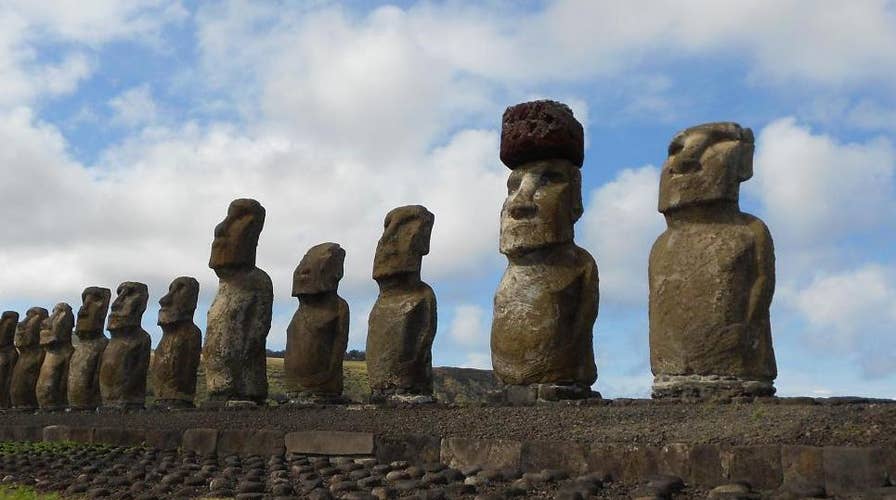Easter Island mystery solved?
Researchers say they figured out how the ancient people of Easter Island put 12-ton hats on the mysterious statues.
More than fifty years ago, famed Norwegian explorer, Thor Heyerdahl took thousands of precious artifacts from Chile’s Easter Island, but this week the Nordic nation agreed to send them home.
A deal was inked in the Chilean capital of Santiago between the Culture Ministry and Heyerdahl’s son, on behalf of Oslo’s Kon-Tiki museum.
“The repatriation is a fulfillment of my father’s promise to the Rapa Nui authorities that the objects would be returned after they had been analyzed and published,” Thor Heyerdahl Jr., stated at the agreement signing.
ANCIENT ARTIFACT UNINTENTIONALLY DISCOVERED BY WASHINGTON ARCHAEOLOGIST HAS 'GREAT SIGNIFICANCE'
Among the collection of artifacts are human bones and carved pieces.

1947: Norwegian ethnologist Thor Heyerdahl (1914 - 2002) and his balsa raft 'KonTiki' crossing the Pacific Ocean on his drifting expedition from Peru to Polynesia. (Photo by Keystone/Getty Images)
Chile'’s Culture Minister Consuelo Valdes pointed out that it is one part of their mission to aid the Rapa Nui people to “recover their cultural heritage’.
“Today, one more step has been taken through this historic agreement with Norway, which will enable the return of valuable cultural and symbolic pieces,” he continued.
Of course, that mission is far from over.
DISCOVERY OF GRISLY AZTEC WAR SACRIFICES COULD LEAD TO LONG-LOST EMPEROR’S TOMB: REPORT

Norwegian anthropologist and explorer Thor Heyerdahl photographed with archaeological artifacts from Easter Island, 1957. (Photo by ullstein bild/ullstein bild via Getty Images)
Chile is also insisting that the British Museum in London give them back the spiritually important figure of Hoa Hakanani – a basalt statue carved by the island’s indigenous Rapa Nui people and said epitomize a significant ancestor.
Heyerdahl garnered fame in 1947 for maneuvering on a small raft known as a Kon-Tiki and journeying almost 4,000 miles from Peru to Polynesia on a quest – albeit a successful one – to determine that ancient South American cultures could have sailed to and populated the South Pacific, dispelling the notion that it was settled by Asians as most historians had believed.





















